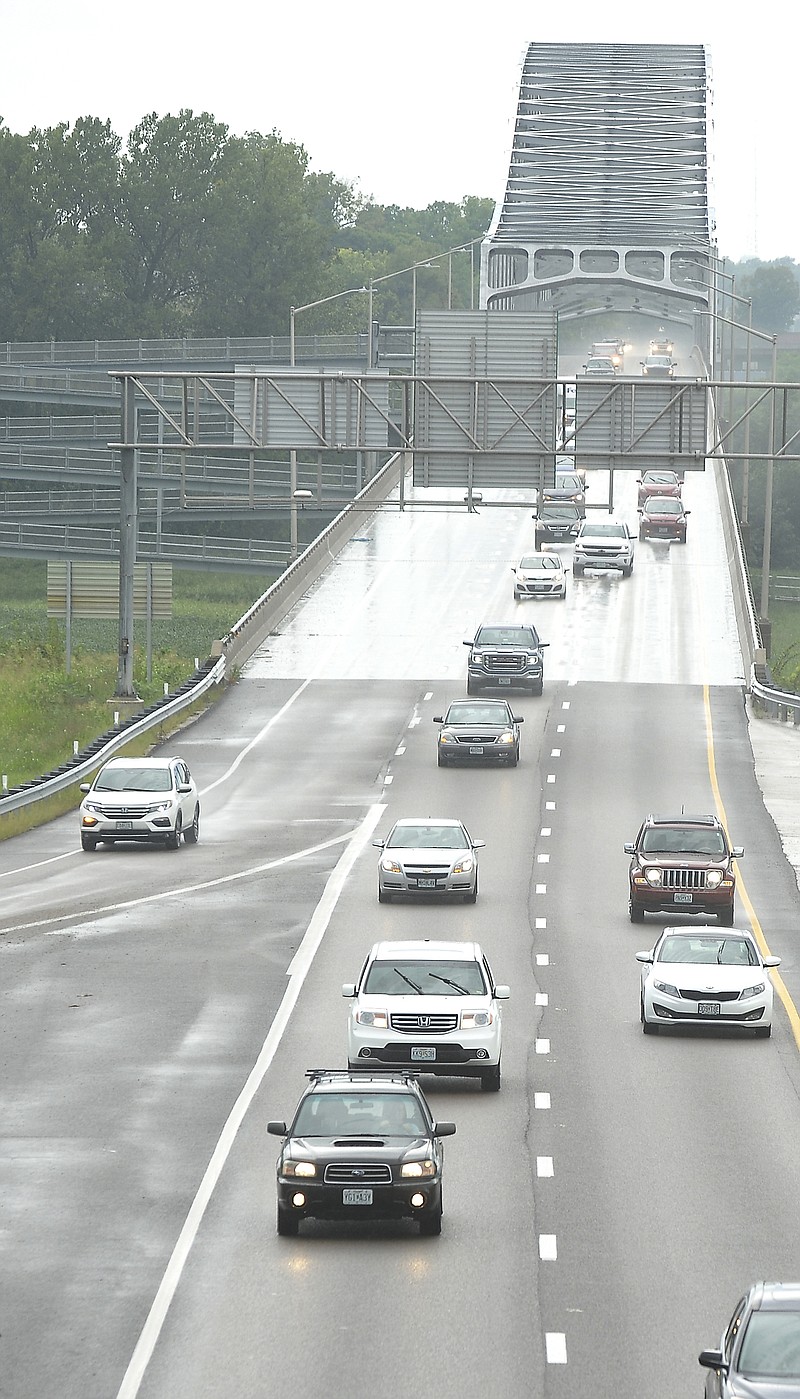MoDOT's planning meeting Tuesday at Jefferson City's McClung Park was the second stop on a nine-city tour around the state.
"Across the state, there's over 1,200 citizens participating in these grass-roots meetings, to identify transportation needs and priorities," Commissioner John W. Briscoe, a New London attorney, told about 100 people gathered in the park's Indoor Pavilion. "Missourians expect their taxes to be spent wisely, to be invested for the highest-priority needs - and that their locally driven projects are to be considered by the planning process."
Briscoe noted MoDOT's planning process "has received national recognition for public involvement."
Tuesday's meeting scheduled five planning groups to make presentations, including the Jefferson City-based Capital Area Metropolitan Planning Organization, or CAMPO.
That group serves a part of southern Callaway County and northern Cole County, including Jefferson City, Holts Summit, St. Martins, Wardsville and Taos.
CAMPO's Katrina Williams noted her agency has 12 main projects for possible MoDOT funding - but the Top 3 are extending third lanes on U.S. 54/63 north of the Missouri River between the bridge and the interchange where 63 heads to Columbia; making improvements at the Tri-Level interchange in Jefferson City; and continuing the improvements on the U.S. 50/63 Expressway between Missouri Boulevard and Clark Avenue.
Central District Engineer Dave Silvester noted he oversees road-and-bridge maintenance in 18 counties, with two major interstates, plus federal highways like U.S. 50, 54 and 63, and state highways like Missouri 179 or 133.
Those roads provide "68 percent of the district's travel," he said, "but it's only about 14 percent of the center-lane miles in the district," while 31 percent of the travel in the district occurs over the "minor" roads covering more than 60 percent of the miles of roads.
Transportation Director Patrick McKenna noted one of the amazing things about transportation in the United States is "the significance of how the entire transportation system works, and how it's important that it all be maintained in a state of good repair, so that you can benefit from it."
But, a "single point of failure" can create problems throughout the nation, he said, citing as one example, the Sioux Docks on a locks-and-dam system in Michigan on the St. Mary's River between Lake Huron and Lake Superior.
It plays a major role in getting iron ore from Wisconsin to smelters in Ohio - and if it fails, "within about 60-90 days, it could affect 15,000 Missouri jobs," mainly in the auto industry, McKenna reported.
Likewise, he said, the Ford plant at Claycomo, north of Kansas City, relies on shipments of truck chassis about every 15 minutes for their ongoing vehicle construction.
McKenna said Ford's inventory plan keeps about 1 hours' supply of chassis for an around-the-clock operation - and every delay costs around $1 million an hour.
That delivery plan uses roads that, McKenna said, need "significant improvement today," at an estimated cost of up to $2 billion.
For example, he said, repairing the Interstate 70 bridge over the Missouri River at Rocheport - a key east-west travel point for the nation - will cut the bridge to one lane in each direction, take about nine months to complete, and cause back-ups that could last up to eight hours.
Briscoe noted the Legislature last year created the 21st Century Missouri Task Force that made a number of recommendations for improved funding for various projects around the state.
He noted the Legislature's placing Proposition D, the proposed 10 cents per gallon fuels tax increase, on to the Nov. 6 ballot was one of the outgrowths of that task force's work.

